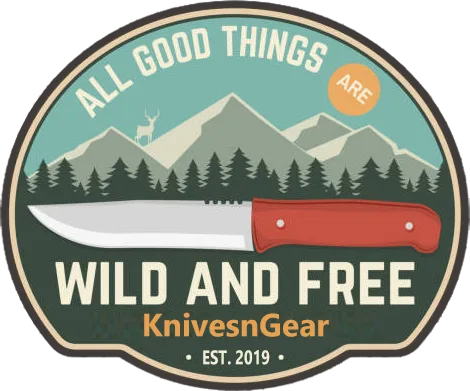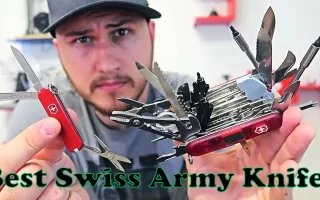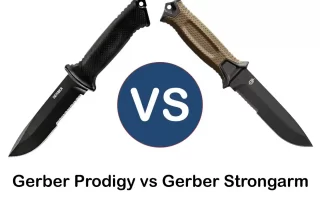What Defines an EDC as Tactical Folding Knife
Think about the original intent of a tool that has the ability to slice through a wide variety of materials in an effort to make living and working a little easier and more efficient. The knife has essentially remained the same through thousands of years of human evolution, but knife designs have improved and diversified to match a host of applications.
![The Best Tactical Folding Knives For Your Money [year] 1 Smith & Wesson Border Guard SWBG2TS Tactical Folding Knife](https://knivesngear.com/wp-content/uploads/2022/01/Smith-Wesson-Border-Guard-SWBG2TS-10in-High-Carbon-S.S.-Folding-Knife.jpg)
Smith & Wesson Border Guard SWBG2TS
The most sought-after knife design in the modern world is perhaps, a blade that can be considered a quality tactical weapon and tool. In the past, tactical gear that included knives were reserved for designs utilized by military personnel and specialized industrial professionals.
In the present market, tactical weaponry is categorized by a delineation of features, shapes, sizes, and unique or unusual components. Rifles, clothing, and technologically advanced items are more difficult to classify when it comes to tactical gear. Knives, on the other hand, are relatively simple to categorize.
Colour and Size
Its usefulness in the field most often identifies tactical gear. Regular hunting, pocket, and novelty knives are very flashy. Manufacturers often value shine and luster over versatility and utility.
A knife that is shiny and ornate cannot normally be considered tactical because its appearance is counter to the object of militarized combat. Tactical gear should retain its lethal qualities without the need for pomp, flashy materials, or marketable details.
Though it sounds as though the most desirable tactical knives are plain and boring, the opposite is true. Exquisite tactical knives appear exotic and intimidating simply because they are designed with certain uses in mind.
Tactical gear is most often identified by its usefulness in the field.
The Lock and Release
Tactical knives are different from standard Bowie, hunting, and wilderness knives in many ways. No feature separates knives into categories of use and versatility like a base, or handle locking mechanism and release lever.
Tactical knives serve a wide range of needs. Blades are often fashioned in shapes and contours that best serve these practical needs. When a blade is displayed, it requires a swivel and lock mechanism to keep it in line with a grip as it remains incapable of accidental retraction.
A reliable and solid locking tactical blade is one of the most valued and effective weapons that can be utilized by the widest spectrum of people.
Tactile Refers To Blade Type Above Other Features
The adopted market definition of “tactical” most often refers to a tool that has certain qualities and features that aid in a wide range of militaristic field duties. Tactical knives are often confused with mainstream commercial knives because of simple marketing mistakes.
Many companies will sell knives to consumers under the title of “tactical” because the knives have features that are intimidating, rare, or labeled as menacing. The true tactical knife will have features along the blade and grip that have very specific purposes aside from aesthetics.
A truly tactile knife will possess a blade that has obvious multi-use features, not just an impressive blade length, thickness, or contour. A well-trained soldier can do more with a true tactical knife than the best novice can accomplish with a fancy knife that looks great and has market appeal.
On a tactical knife, there should be lengths of metal along with the cutting or reverse edges for jobs that require slicing, ripping, sewing, and puncturing. This is precisely why the best tactical knives appear to be complicated and non-traditional.
When a knife blade with a versatile amount of surface features can be locked into place by a body or handle mechanism, it can be considered a tactical blade. Similarly, any functional knife beyond its visual details can be considered a tactical blade. Of course, it may require a tactician to realize the potential of a certain blade.
The word “tactical” comes from the Greek word taktika which means, to possess the qualities necessary to complete a complex maneuver or achieve a complex militaristic end. The simple modern knife is a honed blade with a sharp side used for cutting only.
Tactical knives are suitable for a variety of tasks because of their inlaid versatile and job-specific features. The true tactical knife becomes a lethal and versatile tool rather than only a weapon in the hands of a skilled individual who is focused on completing a task.
In war, or in the realm of a controlled hunt, experienced knife users can achieve things with a tactical knife that is nearly impossible with a standard pocket, hunting, or Swiss Army blade.
Tactics, Strategies, and Knives
Traditionally, the meaning of strategy encompasses a long-term campaign. Tactics indicate the details surrounding a localized event. When attached to a definition associated with tactics, quality knives will most certainly have features making them perfect for intense and duty-specific jobs.
Tactical knives in the past were only available to the highly specialized and trained individual requiring tools for the successful execution and completion of duties. Tactical gear is now readily available for anyone wanting weapons and tools with a military-grade application and a universal attractiveness for the individual.
Tactical knives have features that normal pocket and hunting knives don’t have. These features include locking mechanisms, contoured blades, razor-sharp saw teeth, low-profile color coatings, and subversive sheathing.
A drawn-out situation requires the assistance of soldiers using standard gear. Tactical situations present themselves in times of conflict and in times of peace.
The need for a tactical knife is best addressed from an experienced military perspective. Quality knives are available anywhere. Quality knives with a specific tactical purpose are surprisingly hard to come by.
Buying Tactical Folding Knives
If you intend to purchase and use a quality folding knife, there are only a few things to keep in mind. First, only buy a knife that is made from quality steel and other components.
The auxiliary components should only be part of the handle and sheath. Second, a tactical knife should have cutting, ripping, sewing, and perforating edges. All jobs will require these four actions. Any quality folding blade will be able to handle these duties.
Third, a tactical knife should be convenient for the user. Standard knives are limited and difficult to carry. Exceptional tactical knives are companion tools that have multiple capabilities.
They can be carried or camouflaged as part of a uniform or part of a formal presentation. Carrying a tactical knife requires a fair amount of knowledge and responsibility. Be sure to know what your folding knife is capable of and what its use might mean for a wide range of duties.
20 Best Tactical Folding Knives:
![The Best Tactical Folding Knives For Your Money [year] 2 Taras Kulakov](https://knivesngear.com/wp-content/uploads/2021/06/Taras-Kulakov.jpg)
Hi, my name is Taras Kulakov and I’m a knife enthusiast. I have been collecting knives for over 30 years and I’ve owned literally thousands of different models over that time. My goal with this site is to share some of what I’ve learned about knives. You can find more info about Taras Kulakov here.
Last update on 2023-03-13 / Affiliate links / Images from Amazon Product Advertising API


![Best Japanese Pocket Knives in [year] 4 Best Japanese Pocket Knives](https://knivesngear.com/wp-content/uploads/2021/04/Best-Japanese-Pocket-Knives1-320x200.jpg)

